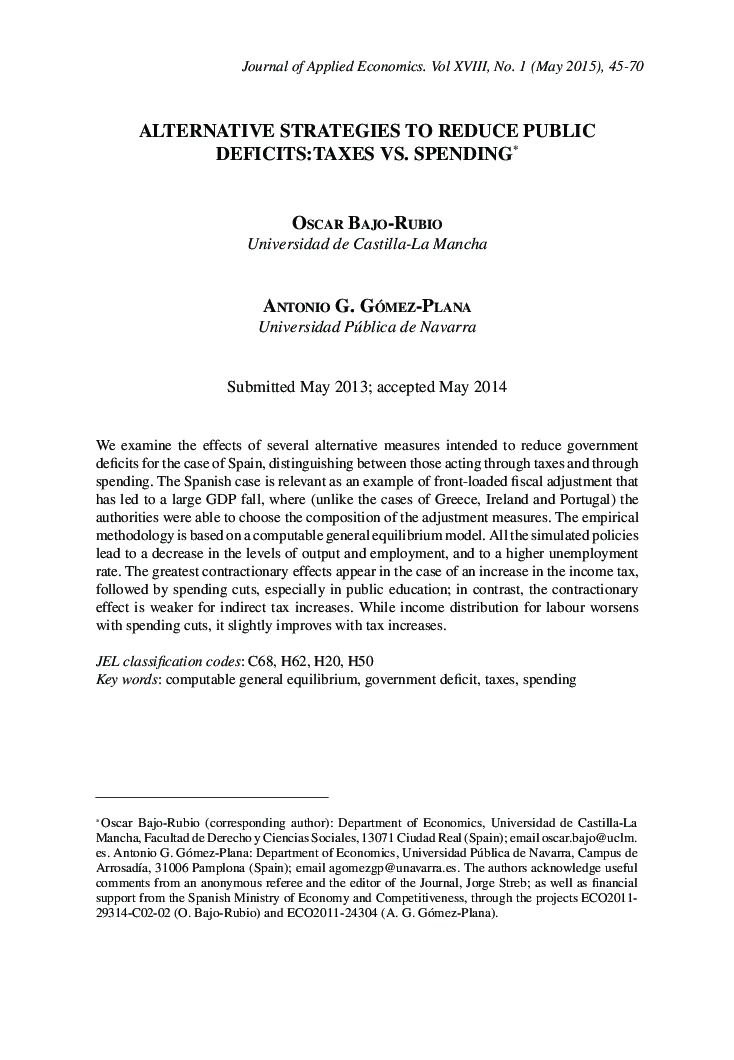| Article ID | Journal | Published Year | Pages | File Type |
|---|---|---|---|---|
| 7356183 | Journal of Applied Economics | 2015 | 26 Pages |
Abstract
We examine the effects of several alternative measures intended to reduce government deficits for the case of Spain, distinguishing between those acting through taxes and through spending. The Spanish case is relevant as an example of front-loaded fiscal adjustment that has led to a large GDP fall, where (unlike the cases of Greece, Ireland and Portugal) the authorities were able to choose the composition of the adjustment measures. The empirical methodology is based on a computable general equilibrium model. All the simulated policies lead to a decrease in the levels of output and employment, and to a higher unemployment rate. The greatest contractionary effects appear in the case of an increase in the income tax, followed by spending cuts, especially in public education; in contrast, the contractionary effect is weaker for indirect tax increases. While income distribution for labour worsens with spending cuts, it slightly improves with tax increases.
Related Topics
Social Sciences and Humanities
Economics, Econometrics and Finance
Economics and Econometrics
Authors
Oscar Bajo-Rubio, Antonio G. Gómez-Plana,
